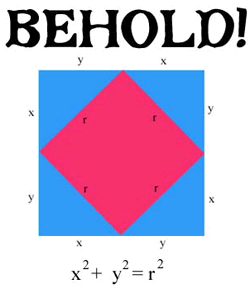
Figure 1 shows one of the simplest proofs of the Pythagorean Theorem. It is also perhaps the earliest recorded proof, known to ancient Chinese, as evidenced by its appearance in the classical Chinese text Zhoubi Suanjing (compiled in the first centuries BC and AD). However, the Pythagorean theorem was known long before this— in addition to the Greeks, the Babylonian, Chinese, and Indian civilizations all were aware of the theorem (for the Babylonians there is evidence they knew the theorem before 1000 BC), though there seems to be controversy over whether there are any earlier recorded proofs than proof contained in Figure 1.
The “BEHOLD!” phrase that is often associated with this picture is credited to Bhaskara of India, when he included this picture, without explaining the proof, in his book Lilivati in the twelfth century, leaving the reader to figure it out.
Can you explain why this figure shows the Pythagorean theorem? (We’ve added some algebraic text as hints!)
Presentation Suggestions:
Show the algebra along with the proof, reminding the class that early civilizations didn’t have symbolic algebra. Perhaps challenge the class to write up an explanation of the proof using no symbols. This is perhaps easiest to do by dissection: rearranging the pieces of the big square to form two smaller squares (with the same total area).
The Math Behind the Fact:
Note that the area of the large square is (x+y)2. Also note that the area of one of the blue triangles is (xy/2), and the area of the red square is r2. Thus we can write two different expressions for the area of the square, and setting them equal to each other, the Pythagorean theorem falls right out! For another cool proof of the Pythagorean theorem, see Shortest Pythagorean Proof?
How to Cite this Page:
Su, Francis E., et al. “Behold! the Pythagorean Theorem.” Math Fun Facts. <http://www.math.hmc.edu/funfacts>.
References:
Katz, Victor. A History of Mathematics.
Fun Fact suggested by:
Ian Schempp

